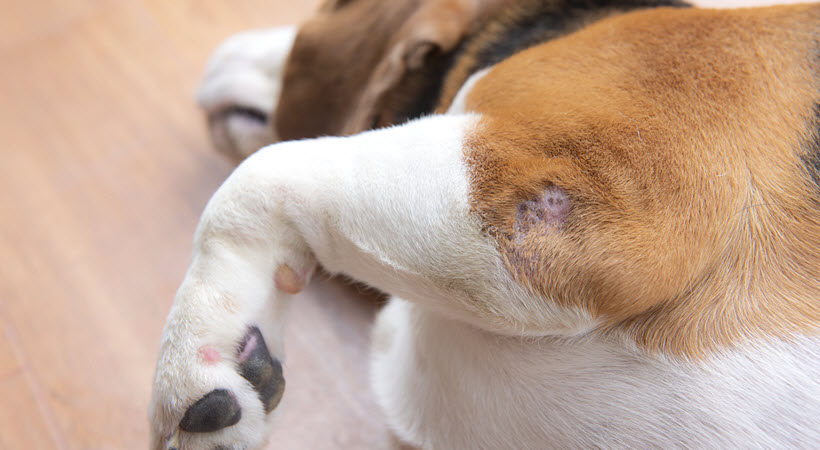Both dogs and cats with diabetes are more vulnerable to infection than non-diabetic animals. Infections of any kind put stress on the body and can tamper with blood glucose control. It is also typical for animals with diabetes to have slower wound healing than non-diabetic animals.
Wound healing difficulties can be one of the most challenging complications of diabetes. Here’s what you need to do about treating complicated wounds and preventing them from recurring.
Diabetes And Chronic Non-healing Wounds
High blood glucose levels caused by diabetes can, over time, damage your dog’s nerves (neuropathy) and result in a poor blood circulation, making it difficult for the blood – required to heal the skin – to reach areas of the dog’s body that are damaged by sores or wounds.
This can cause them to remain open and unhealed for months, raising the risk of:
- Fungal diseases
- Bacterial diseases
- Gangrene
Keeping your dog’s blood glucose levels under control will help reduce the likelihood of slow wound healing now and in the future.
Slow healing wounds in your dog can be a symptom of undiagnosed diabetes, particularly if other symptoms are present. For this reason, you need to monitor your pet’s sugar levels with a a help of a pet glucometer– like Alphatrak glucometer- or you could have them checked regularly from a vet (though this will be expensive and time-consuming).
Slow healing of wounds, including cuts, grazes and blisters, can be especially troublesome for your dog if it is not properly treated. This could also increase the risk of amputation.
It is also vital that dogs with diabetes should have their paws checked regularly and owners should report any signs of injury to their veterinarian.
How To Improve The Healing Process Of Chronic Non-healing Wounds In A Diabetic Dog
To support your dog’s healing process, follow the following tips:
Do routine physical-checks: Detecting wounds is the secret to prevent infections and complications in your diabetic dog. Make sure you check your dog on a regular basis to look for new wounds, particularly on their paws. Also, don’t forget to search in between and under their paws.
Remove the dead tissues: Dead cells and excess tissue usually occur with diabetic wounds. This can promote bacteria and toxins and increase your dog’s wound infection. Your veterinarian will also assist you with the removal process.
Keep their dressings clean: Regularly adjusting the dressings of your dog will help to reduce the bacteria and maintain proper moisture levels in the wound. Veterinarians also prescribe special dressings for wound care.
Keep the pressure off the area: Pressure can cause wear and tear that damages your dog’s skin and can lead to a deeper wound or ulcer.




